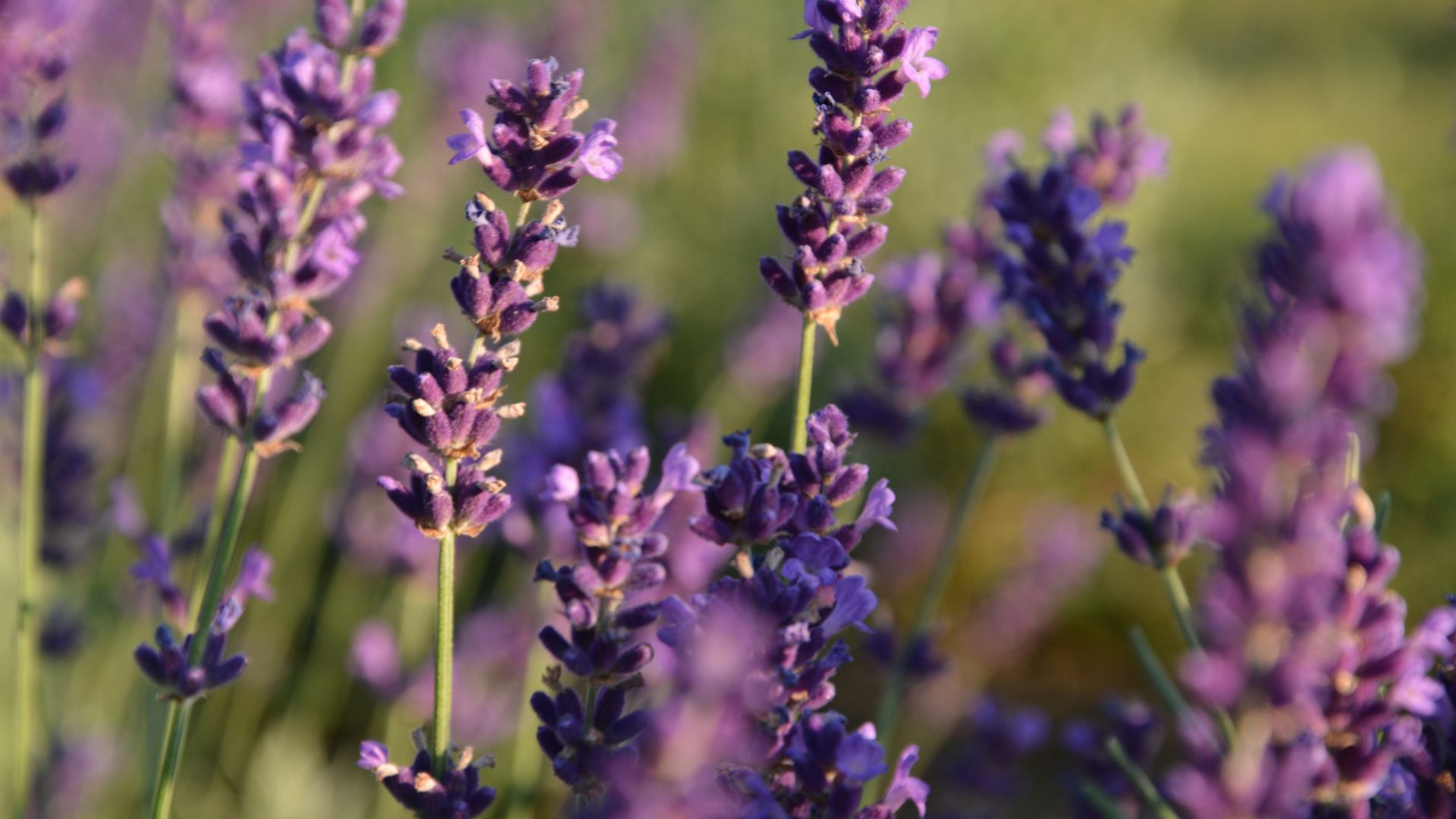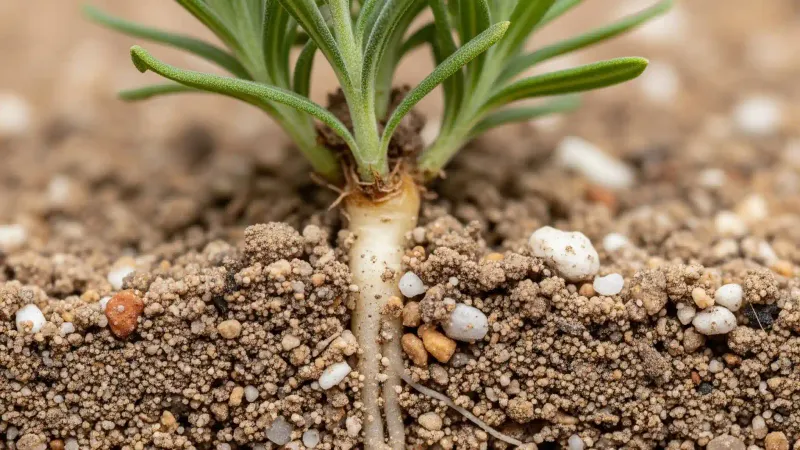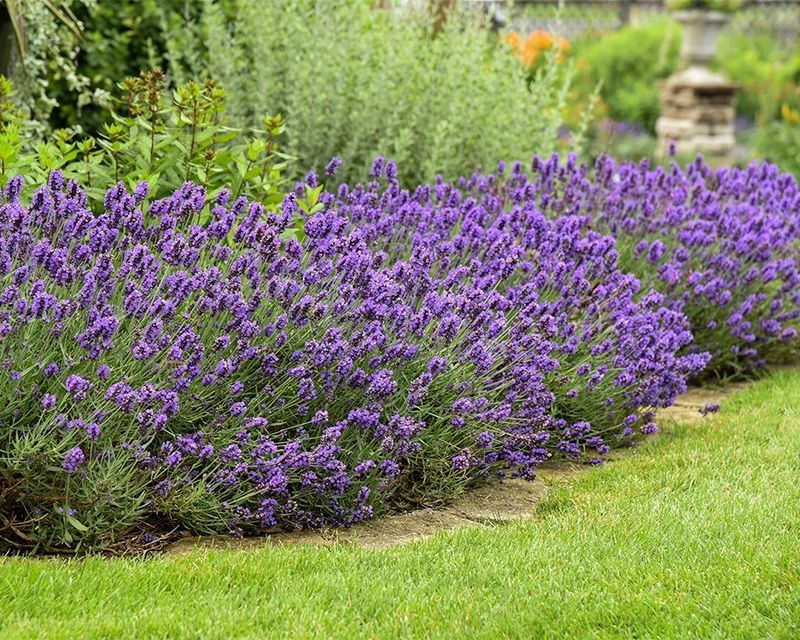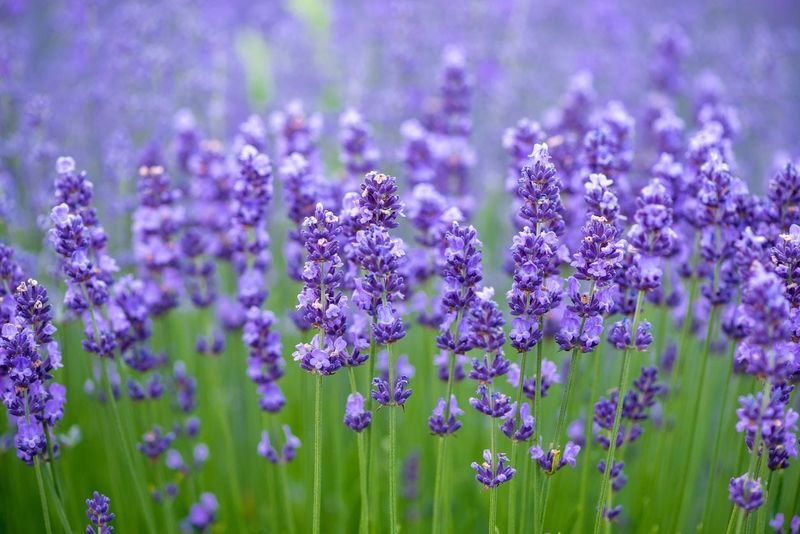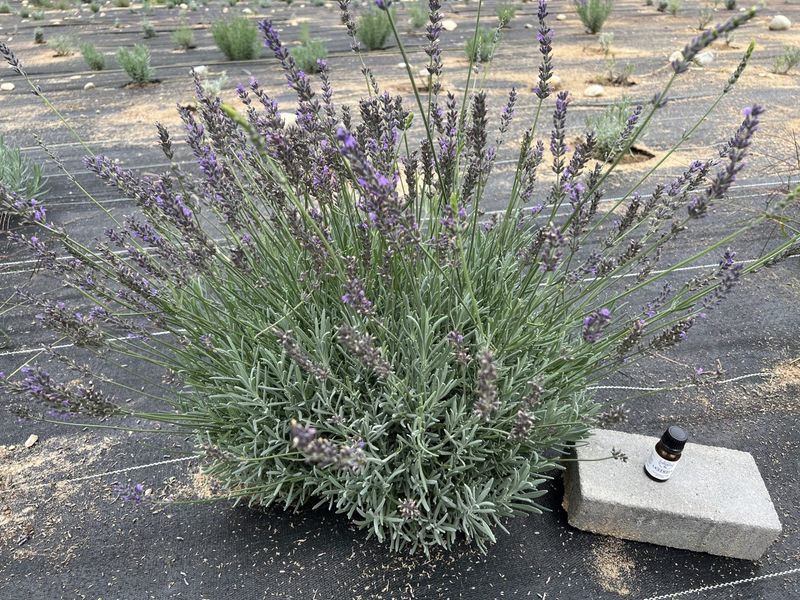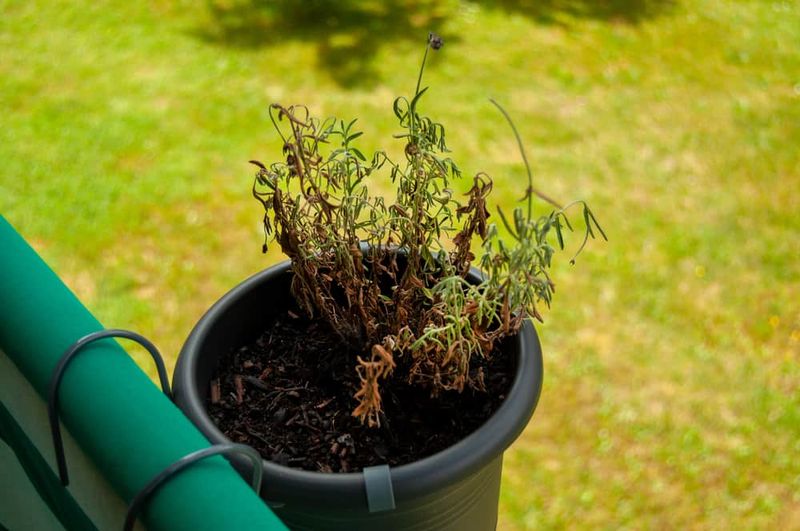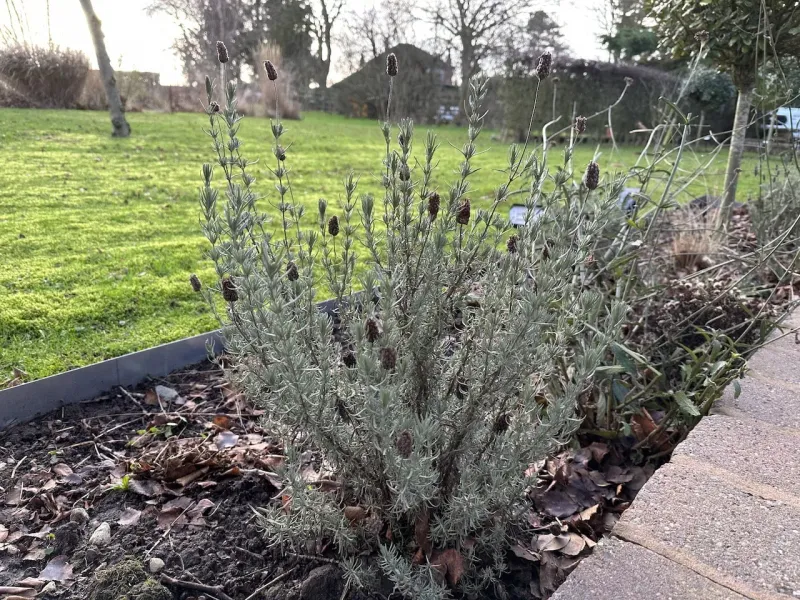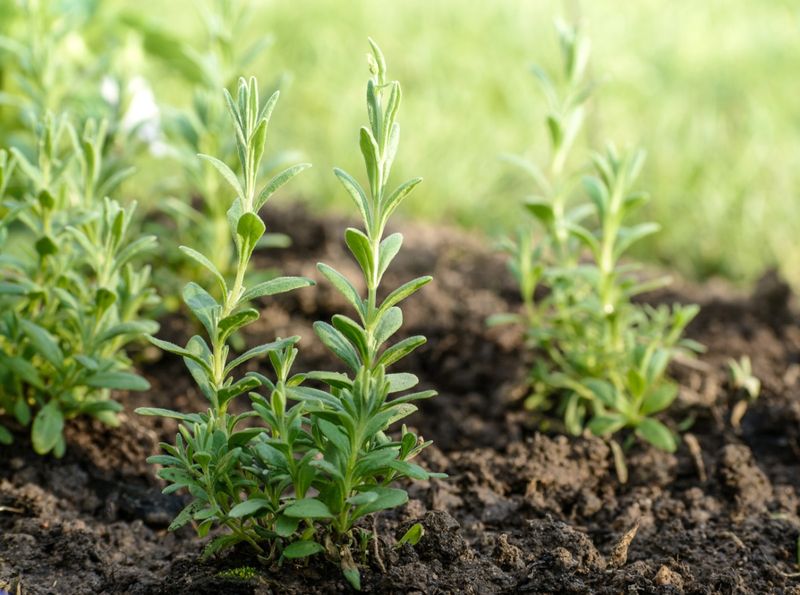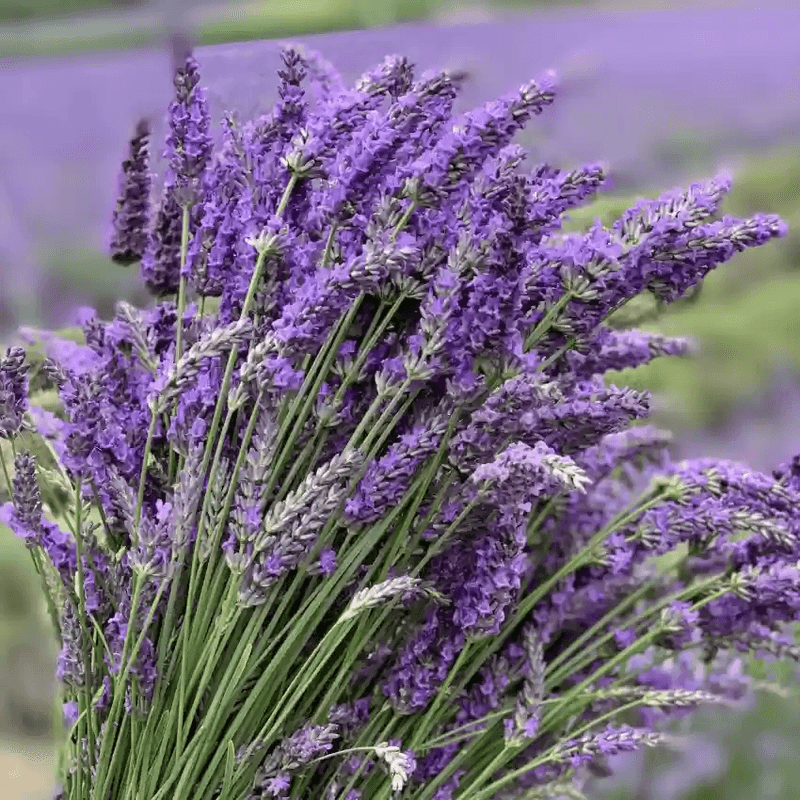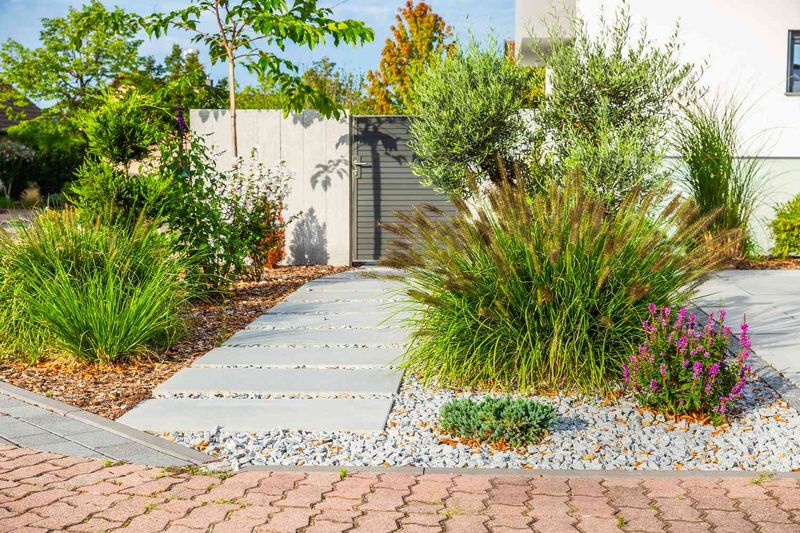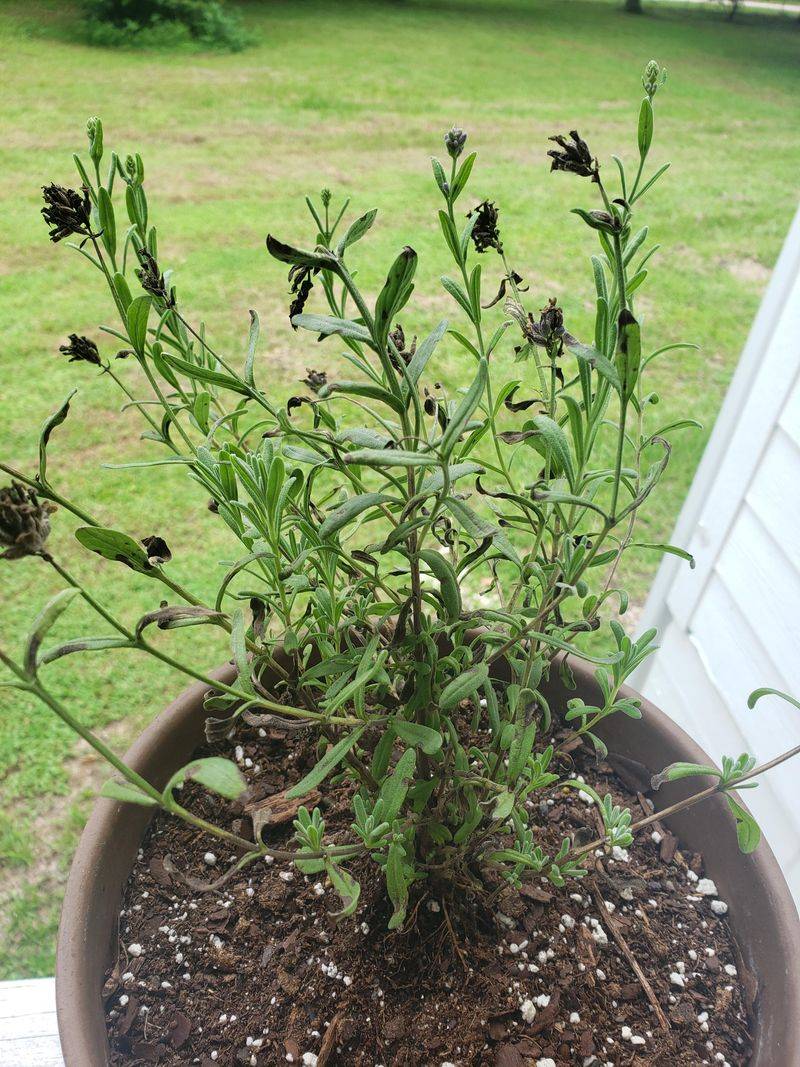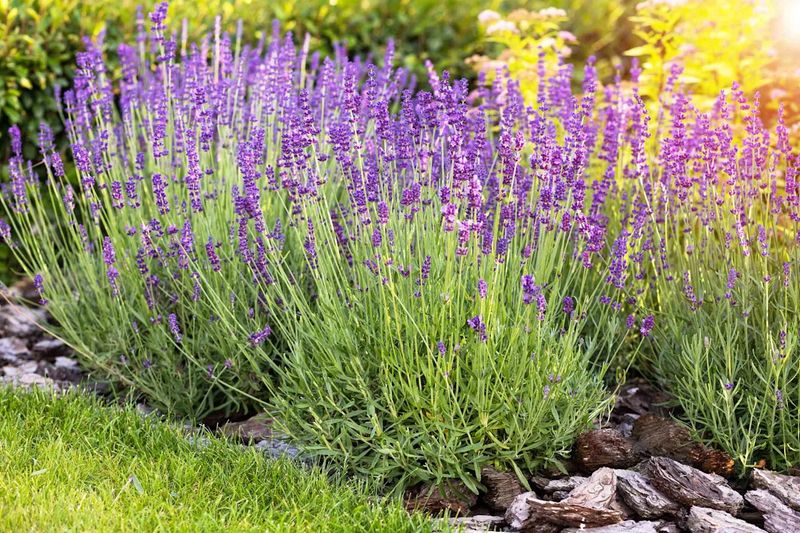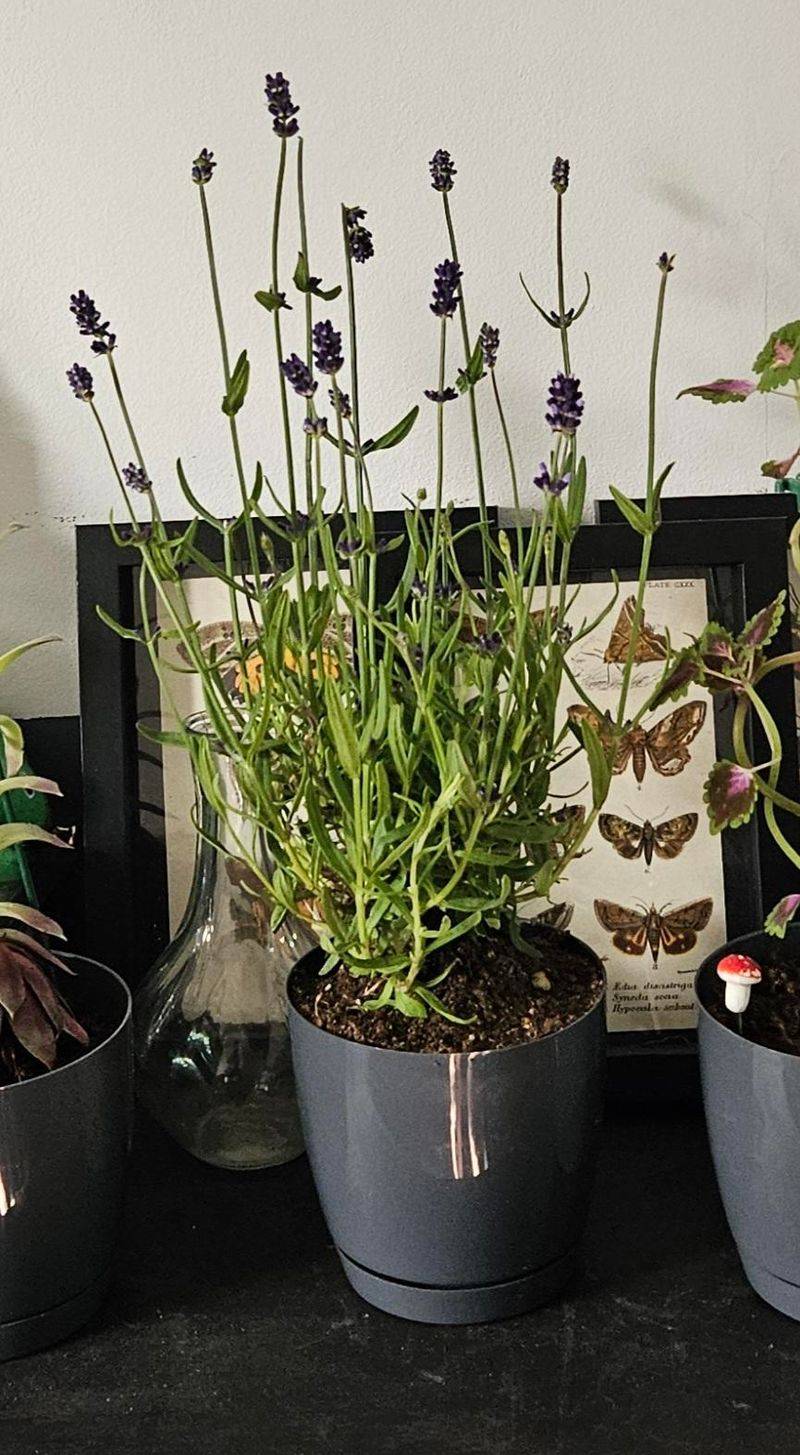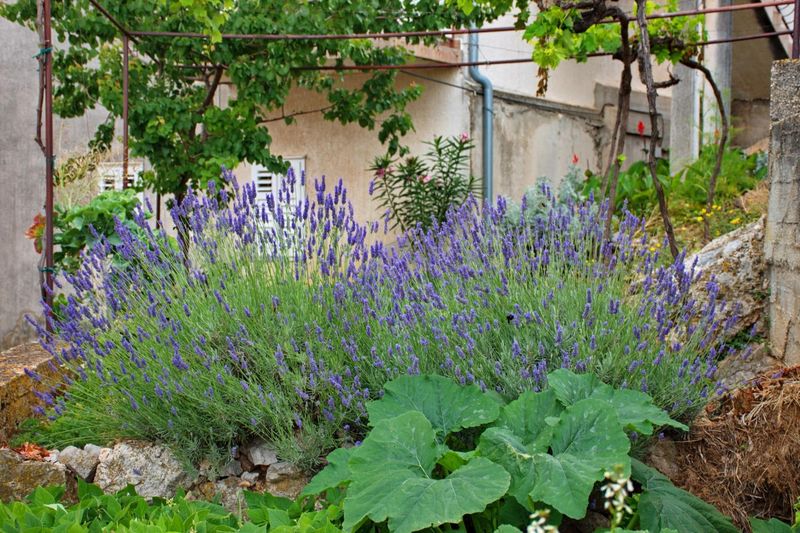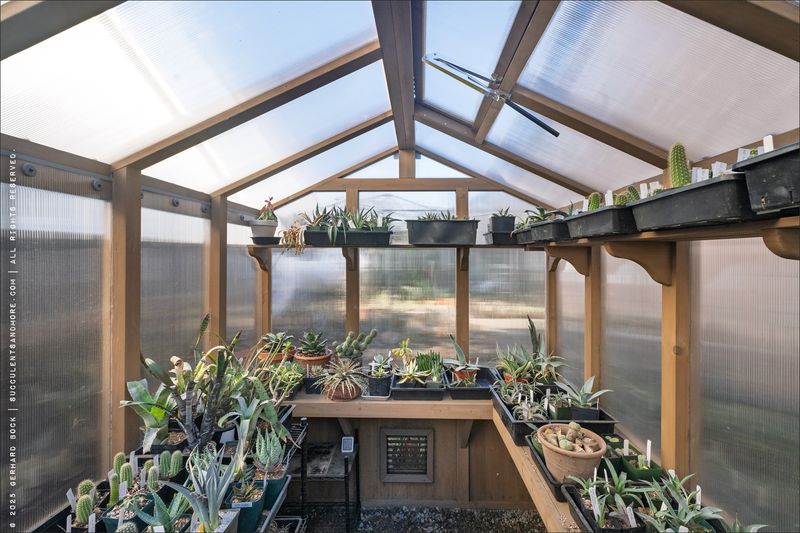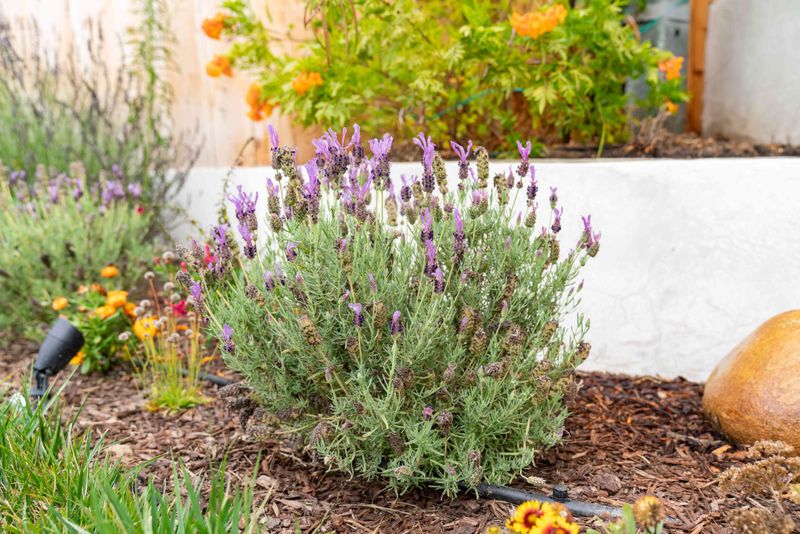Lavender is a gorgeous addition to any garden, but it’s not the easiest plant to please. As pretty as it looks, this herb has strong opinions about where it wants to grow.
The most common mistakes? Planting it in damp soil, shady spots, or crowded beds. Lavender hates wet feet and craves full sun and plenty of airflow.
Give it the right conditions—well-drained soil and lots of sunshine—and it’ll reward you with fragrant blooms and happy pollinators for years to come. Miss the mark, and it won’t stick around.
1. Soggy, Poorly-Drained Soil
Nothing kills lavender faster than wet feet. These plants absolutely hate standing water and will develop root rot within days if planted in clay or compacted soil that holds moisture.
I learned this lesson in my first garden when an entire row of lavender plants turned yellow and died after spring rains. Their Mediterranean origins make them crave well-draining conditions.
Plant lavender in raised beds or mounds instead, where water naturally runs away from the roots. Adding coarse sand or small gravel to your soil creates the drainage these plants desperately need to thrive.
2. Shady Corners
Morning dew lingers too long in shaded areas, promoting fungal diseases that attack lavender’s sensitive foliage. These sun-worshippers evolved under the bright Mediterranean sky and simply can’t produce their essential oils without adequate sunlight.
The north side of my house proved to be a lavender graveyard—plants grew spindly and flowered poorly before eventually giving up. Without 6-8 hours of direct sunlight daily, they’ll never develop their signature scent or color.
Choose a south-facing location instead where sunlight bathes the plants throughout the day. Your reward will be robust growth, abundant blooms, and that intoxicating fragrance lavender is famous for.
3. Humid Coastal Areas
High humidity creates the perfect storm for fungal problems in lavender plants. Their silvery foliage evolved for dry air, not the sticky, moisture-laden atmosphere found along many coastlines.
My aunt’s oceanfront garden in Florida became a lavender hospice despite her best efforts. The plants developed gray mold and powdery mildew that no amount of pruning could control. Coastal gardeners face an uphill battle with traditional lavender varieties.
Consider growing lavender in containers on a sunny deck instead, where you can control soil moisture. French lavender (Lavandula dentata) shows better humidity tolerance than English varieties if you’re determined to try growing lavender in humid regions.
4. Near Automatic Sprinklers
Regular overhead watering from sprinkler systems creates a death sentence for lavender plants. Water sitting on foliage promotes fungal diseases, while consistent moisture around the crown leads to rot.
The sprinkler zone in my perennial bed became a revolving door of lavender replacements until I figured out the problem. These plants evolved in regions with infrequent rainfall and actually prefer to dry out between waterings.
Try planting lavender in a separate, hand-watered section of your garden instead. A deep watering every 2-3 weeks during summer is all established plants need, making them perfect for that hot, dry spot where other plants struggle.
5. Acidic Woodland Soil
Soil under pine trees or in woodland settings tends to be acidic—precisely what lavender hates. These Mediterranean natives evolved in alkaline conditions with pH levels between 6.5-8.0, making acidic soil a no-go zone.
The bed beneath my neighbor’s pine trees became a lavender cemetery despite multiple soil amendment attempts. In acidic conditions, lavender can’t access the nutrients it needs, resulting in yellowing leaves and stunted growth.
Look for naturally alkaline spots in your yard instead, perhaps near concrete foundations which leach lime. Alternatively, create a raised bed with fresh soil amended with garden lime to provide the sweet conditions lavender craves.
6. Low-Lying Frost Pockets
Cold air sinks, creating frost pockets in garden depressions where tender lavender gets zapped during winter. These temperature fluctuations are particularly damaging during late spring when new growth is vulnerable.
The dip in my backyard became known as the lavender graveyard after several failed attempts. While established plants can handle some cold, sudden temperature drops in these low spots can kill even hardy varieties.
Plant lavender on slight slopes or elevated areas instead, where cold air naturally drains away. The middle of a south-facing slope provides ideal protection from frost while offering the excellent drainage lavender requires.
7. Heavy Nitrogen-Rich Soil
Gardens previously used for vegetables often contain excessive nitrogen—great for leafy greens but problematic for lavender. Too much nitrogen stimulates soft, floppy growth that’s weak and produces fewer essential oils and flowers.
My old vegetable patch produced the most disappointing lavender I’ve ever grown—tall, leggy plants that flopped over and barely flowered. These Mediterranean herbs evolved in poor, rocky soils with minimal nutrients.
Seek out the least fertile spot in your garden instead. That challenging corner where nothing seems to thrive might be perfect for lavender, which performs best in lean soil. Skip the fertilizer entirely—lavender actually produces more aromatic oils when slightly stressed.
8. Crowded Perennial Beds
Tight spaces between other perennials create poor air circulation—a recipe for fungal problems in lavender plants. Their wooly foliage traps moisture when crowded, leading to stem and root diseases.
The cottage garden approach failed miserably for my lavender plants, which developed ugly brown patches wherever leaves touched neighboring plants. These Mediterranean natives need space to breathe and allow air movement around their foliage.
Give lavender its own dedicated space instead, with at least 2-3 feet between plants. A sunny border or rock garden provides ideal growing conditions while showing off their architectural form and allowing essential oils to perfume the air around them.
9. Near Lawn Edges
Grass makes a terrible neighbor for lavender, competing aggressively for water and nutrients while creating humidity around the plant’s base. The regular water and fertilizer that lawns demand run counter to lavender’s needs.
The border between my lawn and garden bed became a constant battleground, with grass invading the lavender’s space and neither plant thriving. Maintaining a clean edge required constant vigilance and ultimately wasn’t worth the effort.
Create a buffer zone instead, using gravel or stone between lawn and lavender plantings. This separation prevents grass from encroaching while providing the sharp drainage and reflected heat that makes lavender feel right at home.
10. Containers Without Drainage
Decorative pots without drainage holes become death traps for lavender plants. Water pools at the bottom, creating a soggy layer that inevitably leads to root rot and plant failure.
My beautiful ceramic planter became a lavender coffin after just one heavy rainstorm left the soil waterlogged. Even with perfect soil mix, containers must allow excess water to escape or plants will suffocate.
Choose terracotta pots with drainage holes instead, which not only allow water to drain but also wick moisture from the soil. Adding a layer of broken pottery shards or pebbles at the bottom improves drainage further while preventing soil from washing out.
11. North-Facing Walls
North-facing locations receive minimal direct sunlight in the northern hemisphere, creating conditions too shady and cool for sun-loving lavender. Plants here stretch awkwardly toward any available light.
The north side of my garage became a lavender disappointment zone—plants grew lopsided and produced few flowers despite my best efforts. Without adequate sun exposure, essential oil production suffers dramatically.
South-facing walls offer the perfect microclimate instead. These spots provide not only direct sunlight but also reflected heat that lavender adores. The protection from cold northern winds is an added bonus that helps borderline-hardy varieties survive winter.
12. Indoor Environments
Household conditions rarely provide enough light intensity for true lavender happiness. Even the sunniest windowsills typically offer less than half the light these Mediterranean plants crave, leading to weak growth.
My kitchen windowsill experiment yielded spindly, pale lavender that never flowered properly despite receiving what I thought was ample light. Indoor humidity levels and temperature fluctuations further stress these outdoor-loving plants.
Grow lavender in outdoor containers instead, which can be placed on sunny patios during growing season. If you must keep lavender indoors, choose a south-facing window and supplement with grow lights positioned just a few inches above the plant.
13. Beneath Tree Canopies
Trees create multiple problems for lavender beyond just shade. Their extensive root systems compete for water and nutrients, while fallen leaves increase soil acidity over time.
The lavender I planted beneath my apple tree struggled from day one, remaining stunted and producing few flowers before finally giving up entirely. Even deciduous trees that allow winter sun create too much competition for these Mediterranean herbs.
Open, unobstructed areas make much better lavender homes. Without competition from tree roots, lavender can establish its own root system in the lean, well-draining soil it prefers. The full sun exposure in open spaces also ensures maximum essential oil production.
14. Boggy, Low-Lying Areas
Areas where water naturally collects after rain spell certain doom for lavender plants. Their roots quickly suffocate in waterlogged soil, leading to yellowing foliage and eventual collapse.
The slight depression in my side yard became a lavender execution chamber after just one heavy spring rainfall left plants sitting in water for days. These Mediterranean natives evolved in regions where water drains quickly away from roots.
Raised mounds or berms offer better alternatives for growing lavender in challenging landscapes. Elevating the planting area just 8-12 inches above the surrounding terrain can provide the drainage these plants require, even in gardens with heavy soil.
15. Hot, Humid Greenhouse Environments
Greenhouses trap humidity and heat—conditions that spell trouble for lavender plants. The combination creates perfect conditions for powdery mildew and other fungal diseases that quickly spread through lavender’s dense foliage.
My attempt to overwinter lavender in an unvented greenhouse created a moldy disaster by spring. The plants developed fuzzy gray patches on stems and leaves despite minimal watering.
Cold frames with removable tops work better for lavender protection. These provide shelter from winter wet and wind while allowing excess humidity to escape. During growing season, lavender belongs outside in the open air where breezes can keep foliage dry.
16. Heavy Mulched Areas
Organic mulches hold moisture against lavender’s crown—precisely what these plants don’t want. Materials like wood chips, bark, or leaf mold create humid microclimates that promote crown rot and fungal problems.
The lavender border I carefully mulched with pine bark became a textbook example of what not to do. Plants declined steadily as the mulch trapped moisture around their woody bases, eventually causing stem die-back.
Inorganic mulches like gravel or crushed stone make better companions for lavender. These materials drain quickly after rain while reflecting heat back onto plants. The added warmth helps produce more aromatic oils while keeping the crown area dry—exactly what lavender needs to thrive.

